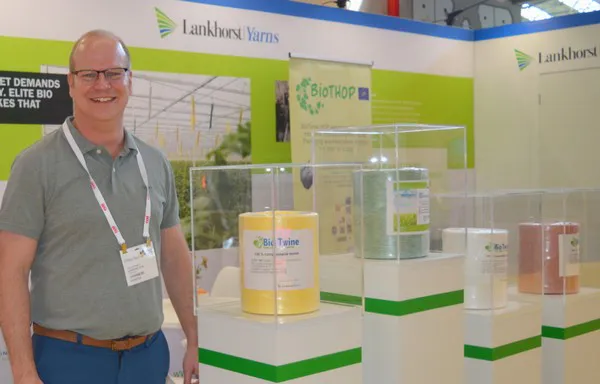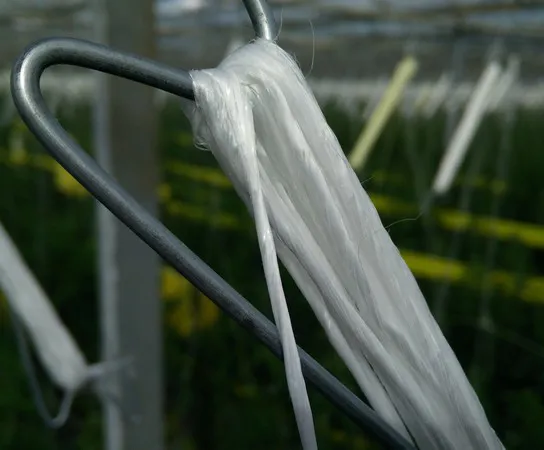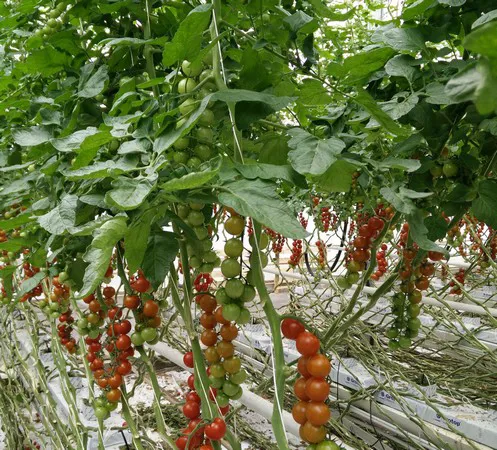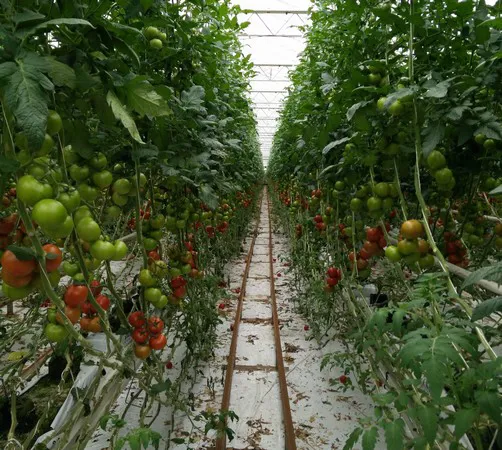Inflation persists at historically elevated levels. Prices for almost everything remain high, thanks to supply chain bottlenecks, increased raw material costs, labor shortages, and myriad other factors.
It's a challenging environment in which to do business. Growers must therefore find ways to drive efficiencies in their operations to reduce cost, raise output, and improve quality. This, in turn, helps to make products more competitive in the marketplace, as well as profitable through various economic cycles.

Jos at GreenTech Amsterdam 2022
Consider tomatoes. Whether they're affordable for consumers and profitable for suppliers has a lot to do with growers' ability to produce and harvest them in commercially viable quantities. And that, it turns out, has everything to do with how a tomato vine is positioned and supported throughout its growth process.
"You want maximum air and light to reach the surface of the plant," said Hans Luijkx, sales manager for Bato Plastics, a leading producer of bioplastics used in horticulture. "And to achieve that, you have to keep it off the ground. That's how you keep a plant healthy."
Healthy plants are good business. The global horticulture industry is valued at $30 billion.
Farmers and vintners have suspended vined fruits and vegetables to make them easier to care for since antiquity. And while contemporary operations may differ in scale, the methods they employ largely resemble those relied upon for centuries.

In today's commercial greenhouses, one finds precisely arranged rows of tomatoes, cucumbers, and peppers, with each plant connected via twine to some form of overhead support. This enhances airflow around the plant, which prevents the spread of disease, and makes it more accessible for pruning and harvesting. It also prevents plants or fruit from becoming lost or spoiled from having come in contact with the ground.

What has changed recently is the range of options available in horticultural twine. That's important because twine plays an outsized role in both yield and operating cost.
Growers must consider numerous factors when choosing twine. These include plant weight and density, stem identification requirements, the availability and cost of labor, disposal costs for green waste, regional ultraviolet radiation levels, and product availability. Other important factors include the general growing environment, humidity, the potential use of sulfur, and twine's all-important physical characteristics, including compostability.
Whatever the choice, twine, at a minimum, must be strong enough to support a plant's weight as it grows and bears fruit. It must also be installed properly to prevent a plant from experiencing uneven or acute stresses that could damage it or reduce its yield.
"You want to install the right twine, the right way, once," said Fernando Eblagon, the research and development manager for materials and intellectual property at Lankhorst-Euronete. "Replacement costs can be significant and are often avoidable."

All of this presents an opportunity for growers to maximize harvests while minimizing costs through the proper choice and management of horticultural twine. "Particularly in today's inflationary environment, that is an investment well worth making."
For more information:
Jos Lemmens  Lankhorst Yarns
Lankhorst Yarns
[email protected]
www.lankhorstyarns.com
